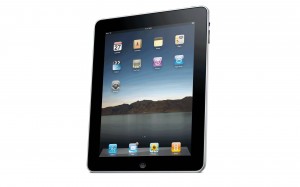By SAM HOLLEMAN
 As kids grow up, they no longer obsess over finishing a Rubix cube or playing with Rockem Sockem Robots, or the ever frustrating, ball and cup. This is the digital age, where children grow up with ear buds in their ears and thousands of games and books available with the tap of a finger.
As kids grow up, they no longer obsess over finishing a Rubix cube or playing with Rockem Sockem Robots, or the ever frustrating, ball and cup. This is the digital age, where children grow up with ear buds in their ears and thousands of games and books available with the tap of a finger.
In these modern times, jobs have become more reliant on technology. Doctors now use computers to store medical files instead of rows of filing cabinets filled with medical paperwork. Police officers are using Global Positioning Systems to decrease their response time to crime locations.
New careers are being created based entirely on new technology such as a social media editor, which is a person responsible for coordinating social media sites (Facebook, Twitter, etc.) in correlation with the companies. From creating applications for the Apple app store and Android market, to personalizing a cloud (a virtual one, not the big white fluffy thing in the sky) for a business upon request. To prepare kids for a growing job industry reliant on applied sciences and telecommunications, schools should implement more technology into America’s education system.
Furthermore, the school system needs to take advantage of the opportunities it can provide to its students. Textbooks are heavy, (this should not be a newsflash to anybody). Fifty percent of students have a backpack that is “too heavy”.
A backpack should weigh 10 to 15 percent of a student’s weight. Every 10 pounds is equivalent to 30 to 50 pounds on the spine with every step. This can lead to health problems in the future such as shoulder tilt, head tilt, and more importantly, scoliosis. Scoliosis is the curvature of the spine (it is what Forrest Gump had); and studies have linked overly filled backpacks to scoliosis. The Kindle weighs about six ounces, can be held in one hand and all of a student’s textbooks will fit on one.
A Kindle provides easier access to student’s textbooks and does not contribute to future health problems if it is used in schools.
Some may argue that schools will not be able to afford supplying all their students with iPads; that purchasing an iPad or other tablet device for every student and faculty member in the school is too expensive. But schools all across the nation are trying to get computers in every classroom. A Kindle Fire’s starting price is $199 in comparison to the $267.45 it costs in textbooks for a sophomore (English textbook is $58, math textbook is $79.47, science textbook is $65, and social sciences textbook is $64.98). A Kindle Fire can do much more than textbooks and is easier to carry than textbooks. It is more reasonable to supply every student with a Kindle Fire than supplying every student with multiple textbooks.
For the sake of cost, schools should purchase a Kindle Fire (or any other tablet device) for each of their students. It provides the same options as a computer, it is cheaper, and can be carried around in a backpack.
Technology is an important part of society. It is constantly changing and as it does, so should the way it is used. If schools do not constantly bring new technology into their teaching establishments, they are stripping students of opportunities.